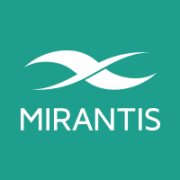Containers as a Service (CaaS) simplify container management, offering scalable solutions for developers to deploy and manage applications efficiently in cloud environments.
Containers as a Service enable developers to run containers at scale, reducing manual tasks associated with managing containerized applications. Users note the ease of deployment and streamlined workflows that CaaS solutions offer, boosting productivity and application deployment speed.
What are some critical features?In industries like finance and healthcare, CaaS is often implemented to ensure applications are secure and compliant with regulatory standards while maintaining high availability. Retail businesses leverage CaaS for scaling applications during peak shopping seasons with minimal manual intervention.
Containers as a Service are helpful for organizations by providing a robust and scalable infrastructure to manage containerized applications, facilitating smoother and more efficient processes.
| Product | Market Share (%) |
|---|---|
| Microsoft Azure Container Service | 22.4% |
| Amazon Elastic Container Service | 19.3% |
| IBM Cloud Kubernetes Service | 9.9% |
| Other | 48.4% |

















Containers are neither IaaS nor PaaS.
Infrastructure as a service (IaaS) is a cloud computing model where the vendor is responsible for hosting the infrastructure for their customers.
Customers or system administrators can access their designated IaaS cloud infrastructure through the internet to create and store web applications and store data.
Containers are a level above IaaS. IaaS platforms often provide the infrastructure (virtual machines and hardware) upon which containers are created and run.
Platform as a service (PaaS) is a cloud computing model where a third-party provider delivers a set bundle of hardware and software tools, such as databases, server space, and code compilers, for users over the internet. A PaaS system is geared for single specific applications and lacks the flexibility of containers, as they are dependent on specific hardware and runtime software.
Containers are not SaaS.
Software as a service (SaaS) is a service that offers on-demand online front-end user software. It is platform independent and doesn’t require local installation of software to run. All necessary resources are provided and managed by the vendor. The user can only use the “front-end” product provided by the service and cannot make any changes to the software behind the user interface.
Google Docs and Microsoft office 365 are popular SaaS platforms.
Container platforms are software solutions that allow users to manage containerized applications.
Container engines and Container orchestrators are two types of widely used container applications.
Container applications that are used on live production environments usually consist of a cluster of several containers that can communicate with each other. These containers are often deployed across several environments and are managed by a container runtime interface.
To create the necessary containers, a container engine deploys an “image” file. An image file is a template with a list of dependencies and requirements necessary to run the application.
Once the image is deployed, a container bundled with the application and all its dependencies is created.
The container is a standalone executable software package and can run independently on any platform.
Benefits of CaaS
Benefits of CaaS include:
Companies with large online applications benefit from container services as they need to scale their services to accommodate multiple system demands.
Container as a service allows for agile and customized deployment, as well as the utilization of all the benefits of cloud servers without customers paying extra for the costs of an integrated platform. For very big companies, this can amount to savings of millions of dollars.
There are many factors to consider when choosing the correct CaaS for your application, such as: